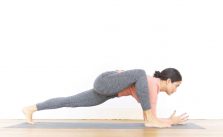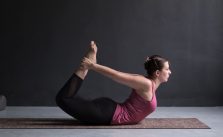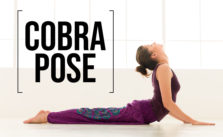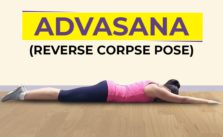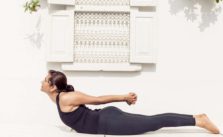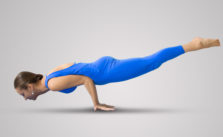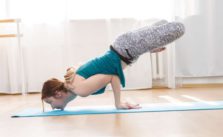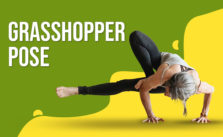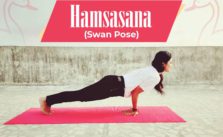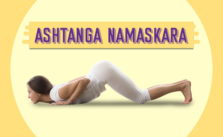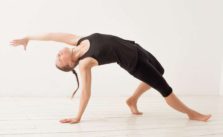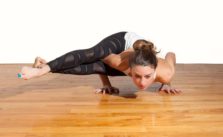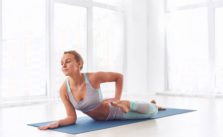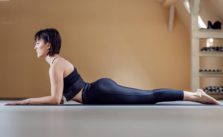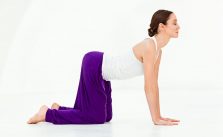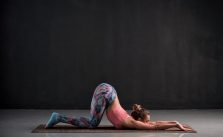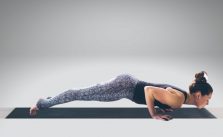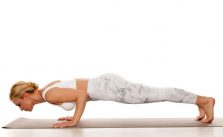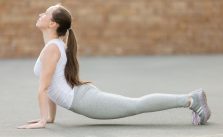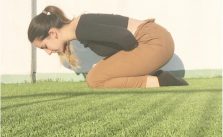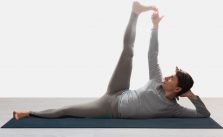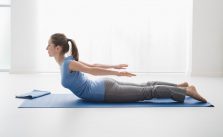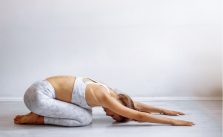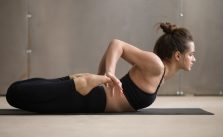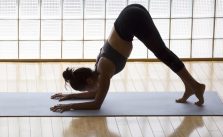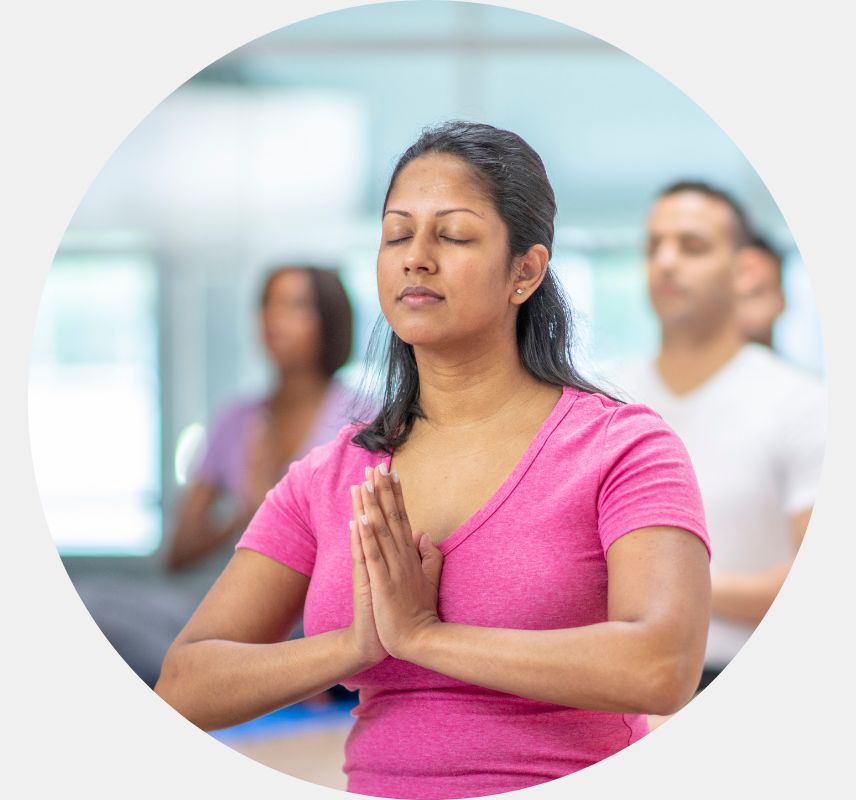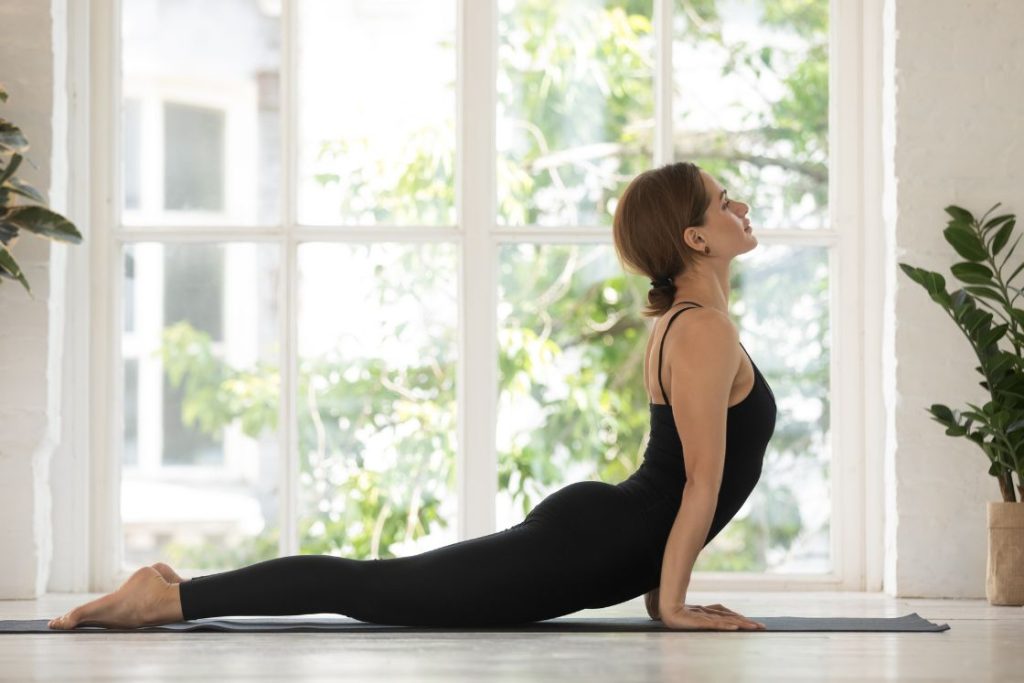
Prone poses are those where you lie down on your stomach. In such yoga poses, your belly and torso can be directly in contact with the ground or lifted from the ground. However, at all times, these body areas will be facing towards the ground.
The front of the body, the back, the shoulders, and the hips can all benefit from prone poses as they strengthen, stretch, and develop flexibility. Backbends are the most common prone yoga postures, and they stimulate the body, tone the kidneys, and strengthen the heart and lungs.
Many belly-down yoga postures help open the chest and strengthen the core body muscles of the low back, abs, and glutes.
Prone poses can be simple for beginners, but they are often difficult to maintain for long periods of time. A prone position can also be adopted as a restorative posture to allow the mind to relax and the breath to stabilize.
Prone Poses in Yoga
Below we have listed 29 prone poses of yoga. Click on each pose to explore step-by-step instructions, benefits, modifications, and precautions. You’ll find the perfect pose to build core strength, improve posture, and increase flexibility.
Dive deeper into your practice with our comprehensive list of prone poses in yoga.
Benefits of prone poses
In prone poses, asanas serve to relieve tension, enhance digestion, promote excellent posture, reduce anxiety, and improve blood circulation. These poses are also beneficial in strengthening the upper body with active engagement of the arms, shoulders, and back muscles.
Below discussed are some more benefits of prone yoga poses are as follows:
- Core Strength: Practicing prone yoga poses can help to strengthen the muscles of the abdomen and lower back, leading to improved core strength and stability.
- Improved Posture: Regular practice of prone poses can help to correct poor posture by strengthening the muscles of the back and neck.
- Increased Flexibility: Prone poses can help to increase flexibility in the spine, hips, and shoulders, leading to an improved range of motion.
- Stress Relief: Many prone poses are deeply relaxing and can help to relieve stress and tension in the body and mind.
- Improved Digestion: Certain prone poses can help to stimulate the digestive organs, leading to improved digestion and elimination.
- Improved Breathing: Prone poses can help to improve the capacity and efficiency of the lungs, leading to improved breathing.
- Relief from Lower Back Pain: Practicing prone poses can help to alleviate lower back pain by strengthening the muscles of the back and promoting better alignment.
- Strengthened Glutes and Legs: Many prone poses engage the muscles of the glutes and legs, leading to improved strength and tone in these areas.
- Improved Circulation: Prone poses can help to improve blood flow and circulation throughout the body, leading to improved overall health and well-being.
Tips for practising prone poses
Prone yoga poses can sometimes be challenging. In order to perform them safely, keep the following tips in mind:
- While lying down on the belly, ensure the pressure is evenly distributed throughout the body.
- Avoid putting pressure on the lower abdomen and hips.
- Using props such as folded blankets, block bolsters, and cushions will give your extra padding and relieve strain from the joints.
- Pregnant ladies or people who have undergone abdominal surgery should absolutely avoid prone yoga poses.
- Over-engaging the glutes can also strain your hips and lower abdominal muscles. Find the right amount of muscle contraction.
- It is common to get cramps or pains in many prone yoga poses. As soon as you feel discomfort, it is better to stop doing the pose and look for modifications.
- Return to a neutral position of lying on your stomach after releasing the pose and take a few breaths to recover and adapt before moving on to the next motion.
- While holding these positions, specifically the more restorative and relaxing asanas, take slow, deep breaths.
